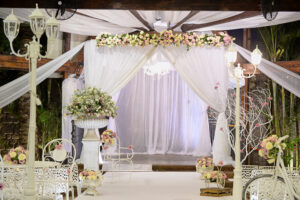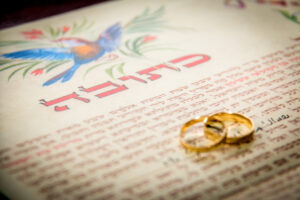 Congratulations on your engagement! When people ask what needs to be done differently for an LGBTQIA+ wedding, the answer is nothing more than any other wedding! Every couple is unique and every wedding is unique. Each marriage brings people together who have different religious and cultural traditions, and different likes and dislikes. You have probably already learned a great deal about each other’s preferences and you no doubt will learn more as you journey through your engagement and marriage. Here are some things to consider in your planning, as well as some good resources for you.
Congratulations on your engagement! When people ask what needs to be done differently for an LGBTQIA+ wedding, the answer is nothing more than any other wedding! Every couple is unique and every wedding is unique. Each marriage brings people together who have different religious and cultural traditions, and different likes and dislikes. You have probably already learned a great deal about each other’s preferences and you no doubt will learn more as you journey through your engagement and marriage. Here are some things to consider in your planning, as well as some good resources for you.
Changing Language

One of the most obvious challenges is changing the gendered language that is present in just about every resource you will find! Try not to be disheartened by it! The world is changing, but that change doesn’t always happen as fast as we would like! Luckily, changing the wording isn’t too hard. Do you still want gendered language? Then replace “Bride and Groom” with “Brides”, Grooms”, “Bride and Bride”, “Groom and Groom” and so on. Do you prefer gender-neutral language? Then use “Partners”, “Lovers”, Friends” or something similar. Because Hebrew is a fully gendered language, every word is either masculine or feminine, but there are ways to adjust that language to be inclusive, building on the great work of the Nonbinary Hebrew Project which is working to make Hebrew gender-neutral.
Updating Your Traditions

While you might find some traditions archaic or even offensive, it is sometimes possible to extract elements that are positive and meaningful to you. I recommend starting by learning different possible meanings of and reasons for a particular tradition and seeing if any of them strike a chord with you. For example, the notion of a bride circling a groom to create a protective barrier around her husband might feel off or even wrong. But, the idea of each of you entering the layers of each other’s souls might be meaningful to you. So then, you update the tradition. Each partner can circle the other partner three times and then you could each circle each other in one fluid movement (a figure eight or infinity symbol) for the seventh circle.
Interfaith Wedding Resources
I have prepared information specific to interfaith weddings here, and these resources may also be helpful to you. These include:
Understanding Your Different Traditions
Determining What to Include
Selecting and Working with Clergy
As a Modern Rabbi, I am honored to work with each couple to design the wedding ceremony they want. I believe strongly in marriage equality and delight in serving and supporting the LGBTQIA+ community. In life – and especially at a wedding – everyone should feel loved and embraced. You can learn more about my approach here.
Again, congratulations! May you have a wonderful journey planning and experiencing your wedding—and beyond!
Do you have questions for Rabbi Adrienne? Feel free to reach out by completing the form below.